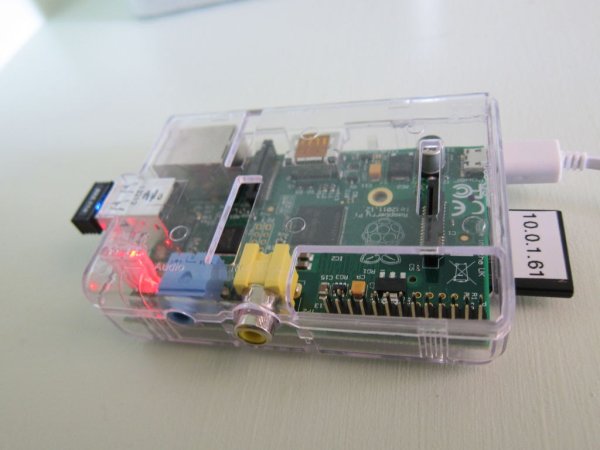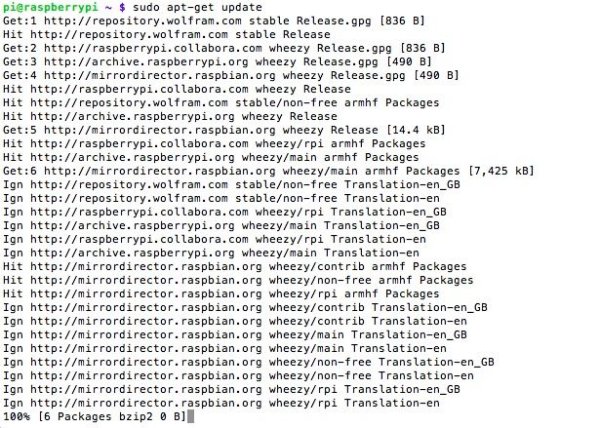Git is usually used in synchronization with GitHub — the former is a source code management system and the latter is a website where you can share/contribute Git repositories with the larger internet community.
For those wanting to get started with GitHub, I've written this Instructable: Introduction to GitHub.
But, what if you want to keep your repositories private? The usual answer is that you have to pay for this service. Boo.
A lot of us have code-in-progress that we want to properly put onto the Git system, but ins't ready for public consumption. Nor do we want to pay for the service of private hosting.
However, using the Raspberry Pi, you can set up your own Git server on your home network.
This Instructable will cover setting up your Raspberry Pi as a Git server with repositories saved onto an external USB thumb drive. My example uses the Mac OS, but can be extended to other platforms as well.
You should already have Git installed on your laptop and know the fundamentals of how to use it. Check out the Introduction to GitHub Instructable if this is not the case.
I've used two sources to figure out how to set up GitPi: a guide by Thomas Loughlin and one by Monkey Hacks.
They're both good, but neither one did exactly what I wanted or explained it fully, which is one reason I wanted to write this Instructable.
Step 1: Set up your Raspberry Pi for ssh
First, setup a Raspberry Pi for ssh access and that it's on your home wifi network, which means that you can log into it from your laptop.
I wrote this Instructable: Ultimate Raspberry Pi Configuration Guide, which covers how to do this.
Once you go through these steps, you'll be able to transfer files to your Raspberry Pi via the Terminal application.
Note: I'm using a Mac for this Instructable, but you can extend this to other platforms.
Step 2: Init the USB thumb drive
We will save all the Git repositories onto a USB thumb drive, rather than the Raspberry Pi's SD card.
This will give you an independent storage drive for your Git repositories, which is easily-readable on your laptop.
Open Disk Utility. Erase the USB drive, format as MS-DOS (FAT) and call the volume GITPI. I also use a labelmaker to affix a label on the back so it doesn't get mixed up with my other USB thumb drives.
Mine is 16gb, which should be plenty.
Step 3: Run latest package updates
Connect via ssh into your PI. My IP address for the SD card for this is 10.0.1.64. Yours may be different — just change the address accordingly.
Open the Terminal window and on the command line, type:
ssh [email protected]
Run the latest package update and upgrades, just to make sure everything is current.
First the update:
sudo apt-get update
Then the upgrade:
sudo apt-get upgrade
Then reboot:
sudo reboot
Step 4: Install Git on the Raspberry Pi
Install git:
sudo apt-get install wget git-core
You'll see terminal output. In this case, the packages were already installed (maybe with the update/upgrade from last step), but you see some sort of success at this point.
Now, turn off the Raspberry Pi by unplugging the micro USB power cable.
Step 5: Permanently mounting the USB drive
Put the formatted USB drive into the Raspberry Pi. And turn the Pi back on.
I'm not sure if this matters, but I always leave the wi-fi dongle in the lower USB port and use the upper one for the external USB drive/keyboard/other things.
Wait a few seconds and then ssh back into the Pi.
ssh [email protected]
What we then type in;
mkdir usbdrv
What we are going to set up is a mount point — a way to always map this directory to the USB drive.
now, type in:
sudo blkid
check out output — we are looking for the USB drive device info, which is easy to identify because we called it GITPI when we initialized it.
Mine reads:
/dev/sda1: LABEL=”GITPI” UUID=”6D34-1514″ TYPE=”vfat”
This should be the similar on yours: /dev/sda1 is the USB thumb drive device.
Now, we are going to edit what is called the file systems table to make the USB drive map into the usbdrv directory
Type in:
sudo nano /etc/fstab
Here is the tricky part. We are going to modify the fstab file so that this device maps to the usbdrv directory.
add the line to the end of the file (you can copy and paste this line)
/dev/sda1 /home/pi/usbdrv vfat uid=pi,gid=pi,umask=0022,sync,auto,nosuid,rw,nouser 0 0
important: this is 1 line, not broken up over two lines (the Instructable is doing weird things to the formatting).
What this does is to map the /dev/sda1 device — any thumb USB drive to the usbdrv directory. The flags are ones that I cribbed from the Thomas Loughlin guide. Admittedly, I'm not sure exactly what they do, except for allow the drive to be a read-write drive and not tied to a specific user.
Cntl-X, Y, Return to save.
Then restart:
sudo reboot
If you want to learn more about drive-mapping and mounting, this eLinux Guide has a lot more information.
Step 6: Test the USB transfer
After your Pi reboots, you'll have to ssh into it again.
Then, on the command line:
nano usbdrv/test.txt
This will create a text file in the usbdrv directory — which is actually the USB thumb drive itself called test.txt. Put some text in the file, like mine pictured here.
Cntl-X, Y, Enter to save
At the command line:
ls usbdrv
And you'll see a lone file, test.txt.
Turn off the Raspberry Pi. Pull the thumb drive and mount it onto your laptop.
Presto! You can read the text file on your laptop. Delete the file, pull the drive, put it back into your Raspberry Pi and power the Pi back up.
The cool thing is that the Git repositories can be read by your computer and are not tied to the Pi. The usbdrv will always mount to whatever USB drive you put into the Pi. If you have source code overflow problems, you can always swap out USB thumb drives.
For more detail: GitPi: A Private Git Server on Raspberry Pi



